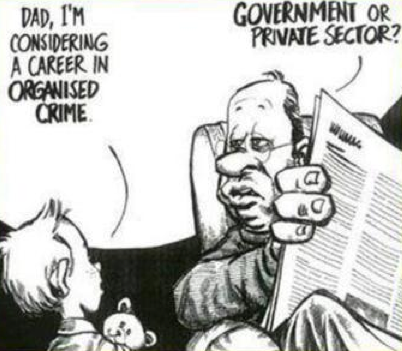Three ways The Economist gets Organized Crime wrong
Three ways The Economist gets Organized Crime wrong

This week’s Economist includes an article all about organized crime and illicit everything (fakes, endangered animals, rare trees) in a “market which, according to America’s Congressional Research Service, is worth as much as $133 billion annually.”
Now, $133 billion seems like a lot of cash, and of course, it is. But let’s get something straight: every single one of the top ten Fortune 500 corporations had revenues over $133 billion last year. Walmart alone took in $469.2 billion.
But worry not friends, because Walmart is licit. The pillaging, contamination and destruction of the environment to bring consumers cheap everything, as well as the exploitation of workers is fine. No harm done. Because it is legal not illegal. Memorize that binary if you want to make it big in the status quo media (SQUM).
In full Economist/SQUM fashion, the article focuses on governments (good guys) and crime groups (bad guys). No mention of the elephants lumbering in the room, like Walmart, which create an important portion of the waste that is later disposed of by mafias or whatever. Forget about that, it’s licit. Well, most of it anyways. No mention of state collusion with these markets either. Nah, too complicated.
The key problem, according to The Economist is illicit markets, goods and trade. I’m not advocating for killing rhinos for their horns or whatever but it seems a tad off to focus on these ecological offenses when water, land and forests (ahem, human and animal habitats) are being destroyed all over the planet on a massive scale to feed the so called legal market.
The article continues:
But as traditional industries have shrivelled so, too, have the unions and tight-knit neighbourhoods that were once [the mafia’s] fertile breeding grounds.
Interesting, innit, how The Economist portrays tight-knit neighbourhoods and unions as the problem, and the reason organized crime got a foothold. Rest assured, now that there are less unions and people are alienated and displaced through gentrification, violence and otherwise, there’s less bad guys. Know why? Cause now those places and their residents and workers are tightly bound to neoliberalism.
Yea right.
There’s obviously more in the article that’s up for debate and criticism, but those were the three main points I wanted to bring up. Here they are again.
First, so called legal market is much bigger and more destructive than illegal markets (and the two obviously depend on each other). Second, transnational corporations cannot be ignored when we’re talking about the globalization of markets or organized crime. Third, The Economist fingers unions and tight knit communities as “breeding grounds” for criminal organization, when in fact it is late capitalism that provides economic and political incentives for pillage and plunder, displacing communities and increasingly denying working and poor people the ability to meet their basic needs.
Originally posted on Dawn's blog.

